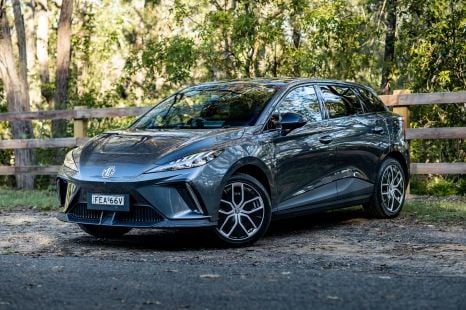

Matt Campbell
2025 MG 4 Long Range 77 Review
5 Months Ago
Lower pricing is just part of the appeal of this updated version of the Atto 3, which sees a number of important changes.



Quickly see how this car stacks up against its competition. Select any benchmark to see more details.
Where expert car reviews meet expert car buying – CarExpert gives you trusted advice, personalised service and real savings on your next new car.
I already thought the BYD Atto 3 could be the ideal ‘first EV’ for a lot of Australian buyers, and now the deal has been sweetened somewhat.

That’s because the brand has just adjusted the pricing downwards for its popular small electric SUV, while also improving the standard specification levels and making a few visual adjustments, too.
You’ll be able to pick the updated Atto 3 from the outside by its new BYD rear badging, while there is also a new decorative element on the C-pillar which is now finished in black, rather than the reflective silver-chrome of the pre-update. Crucially, it also gets Continental tyres now.
And for those who have been hankering for a black BYD Atto 3, your wish has been granted – at the expense of the more appealing Parkour Red and Forest Green finishes.
Inside, the trim colour depends on the exterior option you opt for – Cosmos Black and Boulder Grey both get the black and blue interior finish, while Ski White and Surf Blue get a white and blue interior finish.
There’s also a bigger touchscreen media system – not that it felt too small in the last one – and yes, it still rotates.
So, let’s discuss whether the changes have been worthwhile and what it’s like to drive, too. The version tested here is the more expensive 2024 BYD Atto 3 Extended Range, finished in the new black paint finish, naturally.
Pricing for the BYD Atto 3 is down $3512 compared to the pre-update model.
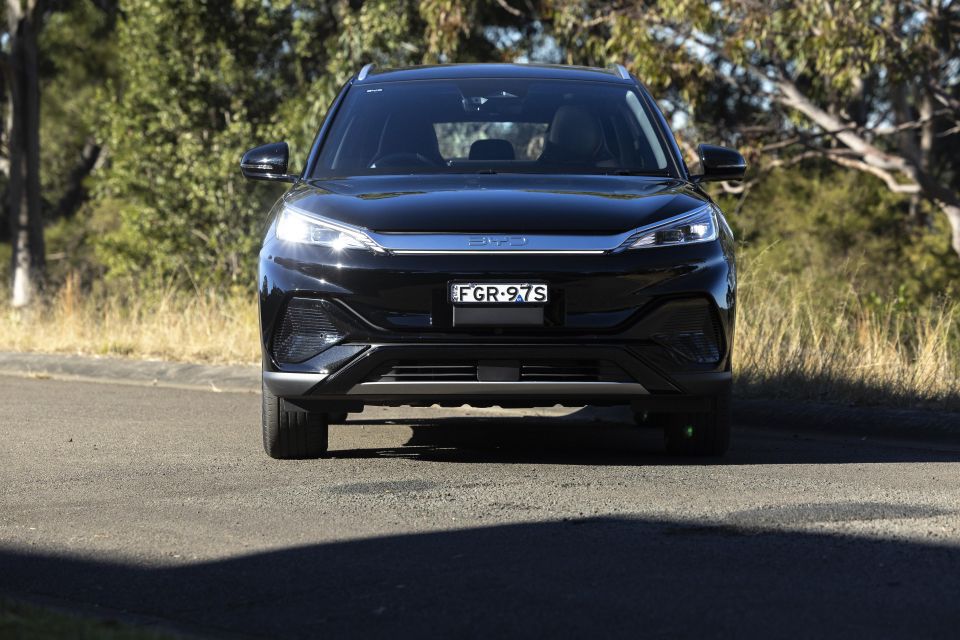
| Model Variant | $RRP |
|---|---|
| 2024 BYD Atto 3 Standard Range | $44,499 |
| 2024 BYD Atto 3 Extended Range | $47,499 |
The prices above are list pricing. Your drive-away price may vary greatly, depending on which state you live in.
Colour options? Ski White is the only colour available at no cost. Surf Blue, Boulder Grey and Cosmos Black are all $700.
To see how the BYD Atto 3 stacks up against the competition, check out our comparison tool.
Buy your new car without the stress. It's fast, simple and completely free.

Great service from Travis and team, second time I have used this business would not hesitate to recommend them to anyone
Craig C.
Purchased a Ford Ranger in Sunshine Coast, QLD
CarExpert helped Craig save $7,224 on his Ford Ranger, now let us save you on your next new car.
Get your BEST priceWhen it comes to the interior of the BYD Atto 3 you will either love it or hate it.
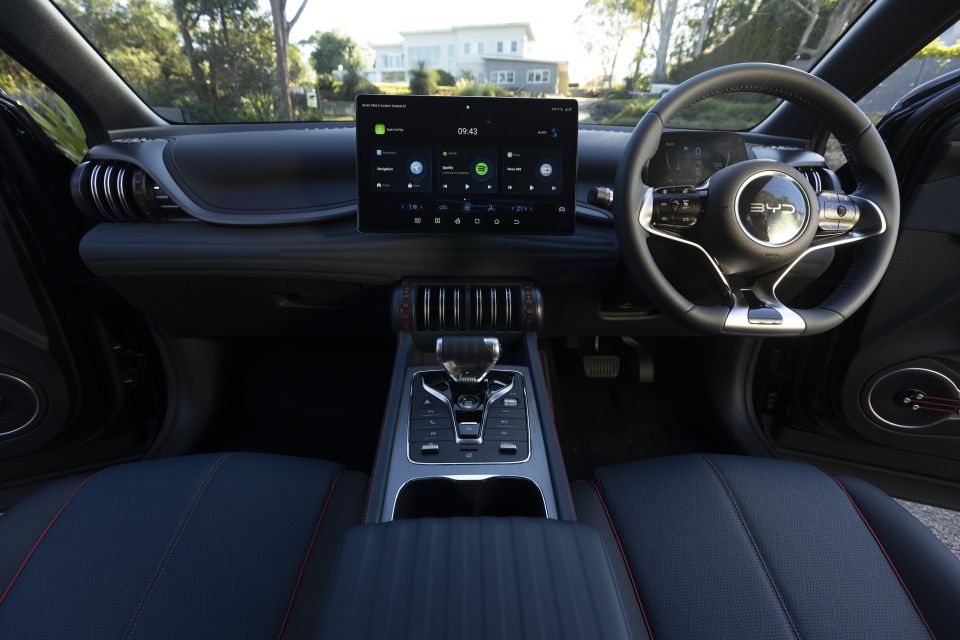
It certainly isn’t like anything else out there from other brands, with an eclectic design that might otherwise be described as ‘odd’, ‘strange’, ‘ugly’ or ‘interesting’. But as kooky as it is, at least it’s not bland and austere like some rivals, right?
As mentioned above, there is a new black-and-blue interior trim, which is fitted to the grey and black painted versions of this car. However, the existing two-tone white/cream and blue of the existing model carries on to the white and blue exterior paint choices.
No matter which one you pick, you still get red piping on the seats, more than a few audacious curves and design elements; and yes, there are guitar strings on the doors. Well, they’re designed to be door pocket elasticated straps, but you can actually play them like a guitar, which is a nice thing to do when you’re bored in a traffic jam.
Even so, for someone who might have been wishing for a bit more of a sedate cabin design in what is otherwise an inoffensive looking SUV from the outside, it might be a bit much.

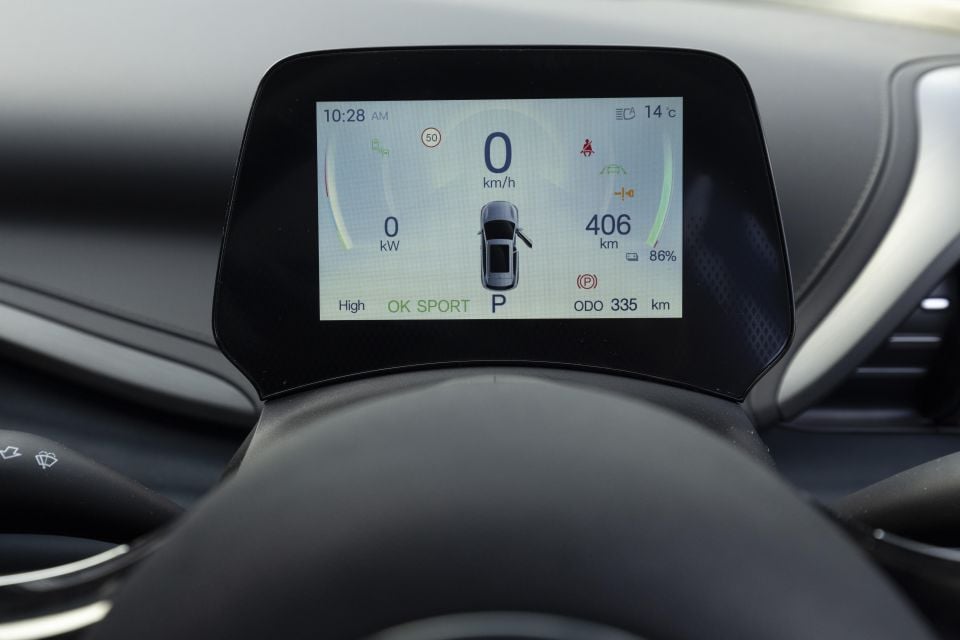
The other big focal point is the rotating media screen, which is literally an even bigger focal point now, having been upsized from a 12.8-inch to a new 15.6-inch unit.
You can still turn it 90 degrees to be portrait layout if you want – there’s a button on the steering wheel or on the ‘home bar’ at the bottom of the screen.
While the portrait layout might be preferable for some of the car’s controls and the native sat nav system, if you’re like me and just like to connect up to Apple CarPlay (which can be done wirelessly now), then you need the screen in landscape mode.
There are menus upon menus for adjustments to the car’s controls, and there are no buttons or dials to make things a bit easier when you’re trying to adjust things on the move. There is a voice control system however, and once you get the hang of the controls for the climate control or the seat heating, it’s pretty easy to manage.
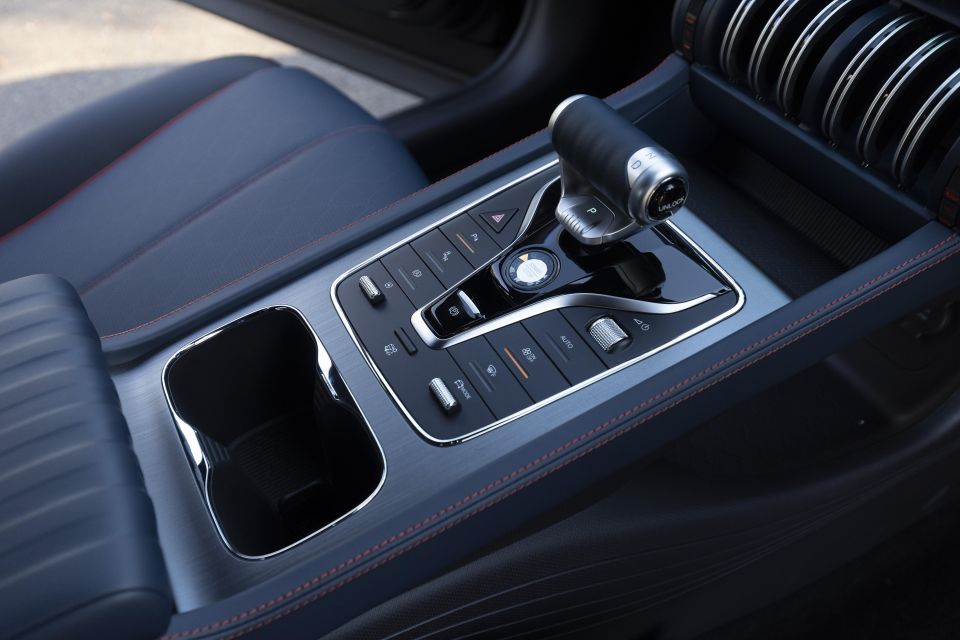

It is a bit strange for there to be such a huge media screen, yet such a tiny little driver info display. It’s a 5.0-inch unit, and you interact with it using the steering wheel. But unlike other BYD models, it doesn’t offer the capability to adjust the fan speed or temperature through that screen – it also looks crooked to me, too.
Some of the other quirks and features include the rounded door handles with ambient LED lighting integrated into them, as well as the peculiar looking air vents that have a lovely tactile adjustability to them.
The cabin is a pretty thoughtful place in terms of storage and usability, with a functional level of cabin stowage including cup holders, a big covered console area, an additional storage tray down below the bridged section between the front seats, as well as a wireless phone charging tray.
There’s a glovebox too, and you don’t need to open it with a button on the screen like you do in a Tesla.

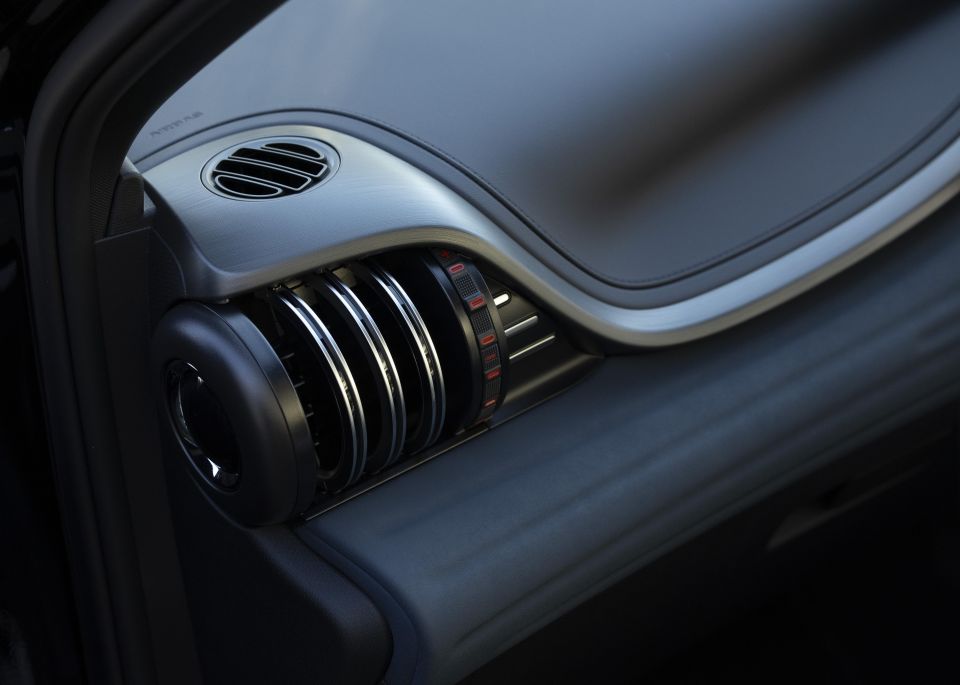
As for back seat comfort and space, it’s pretty decent for a young family.
This is a five-seater SUV that’s about the same size as a Mitsubishi ASX, yet it offers more second-row space than you might find in something larger, like an Outlander.
At 182cm or 6’0” tall with the driver’s seat set for me, I could fit in with ample knee room, lots of head room (even with the standard panoramic sunroof), and just enough foot space too.
There’s a flat floor, so if you need to fit three grown-ups across the back you should be able to, but just make sure the smallest one goes in the middle, because it’s a bit cramped.
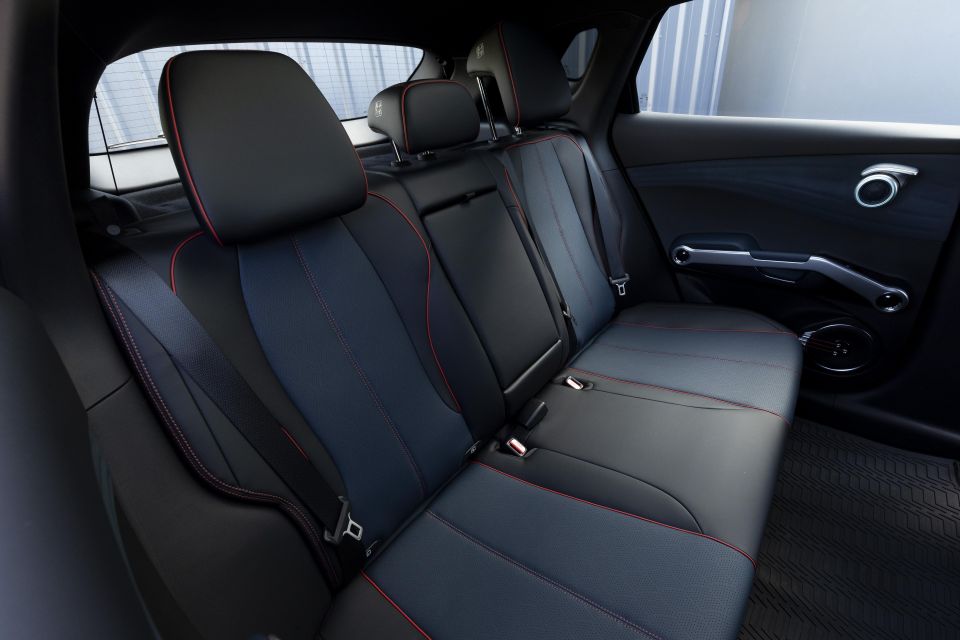
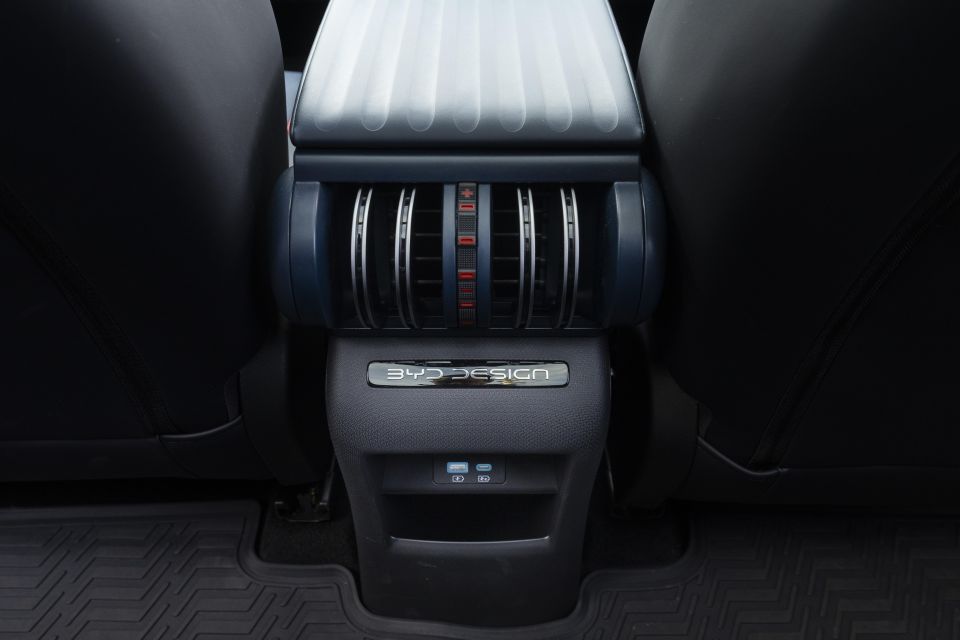
As for kiddos, there are ISOFIX points in the window seats and three top-tethers, plus the amenities are taken care of.
There are multi-pocket compartments on the seatbacks, bottle holders in the doors (with strings attached), and pair of cupholders in a flip-down armrest. Rear seat riders also get a set of directional air-vents, and there are USB charging options too.
For the mums and dads out there who find themselves often loading youngsters in or out in the dark, take note that there are still good lighting options despite the fact it has a big panoramic glass roof.
Boot space is also decent. The cargo area has an adjustable floor height, meaning you can either have it level with the boot lip – which might be handy if you’re loading heavy items in, or you can lower it down to maximise capacity.

All told, there is a maximum of 440 litres with the rear seats upright, which is easily enough for a pram and a few backpacks, or a fortnightly shop. You can also fold the rear seats down to get 1340L of capacity if you need it.
While there is no spare wheel under the boot floor, it does come with a tyre repair kit, and there’s a stowage space for cables under the floor, too – but weirdly, despite the fact there is space for it, the Atto 3 doesn’t have a front trunk storage box.
It has an electric tailgate, which is very handy, but it’s not one of those clever ‘kick to open’ ones. And further, while there is keyless entry, there is just one button on the driver’s door to make that work, or you can use the NFC card to tap on the mirror housing to unlock the vehicle.
Other cars have ‘walk-up proximity unlocking’, such as the Renault Megane E-Tech.
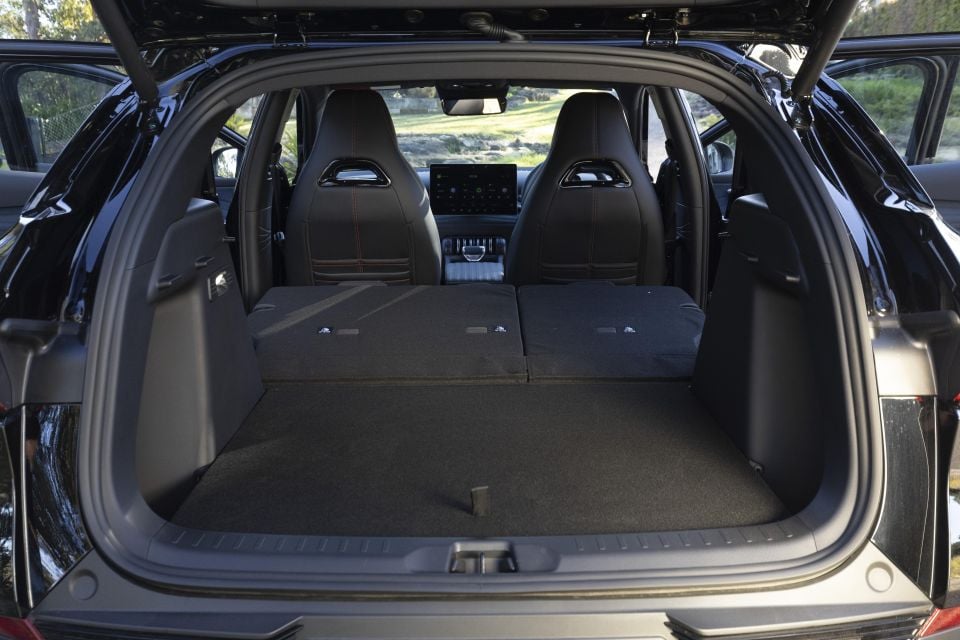
| Dimensions | BYD Atto 3 |
|---|---|
| Length | 4455mm |
| Width | 1875mm |
| Height | 1615mm |
| Wheelbase | 2720mm |
| Boot space | 440-1340L |
To see how the BYD Atto 3 stacks up against the competition, check out our comparison tool.
The BYD Atto 3 has a front-mounted permanent-magnet synchronous electric motor producing 150kW and 310Nm. It has a single-speed transmission, and is front-wheel drive.
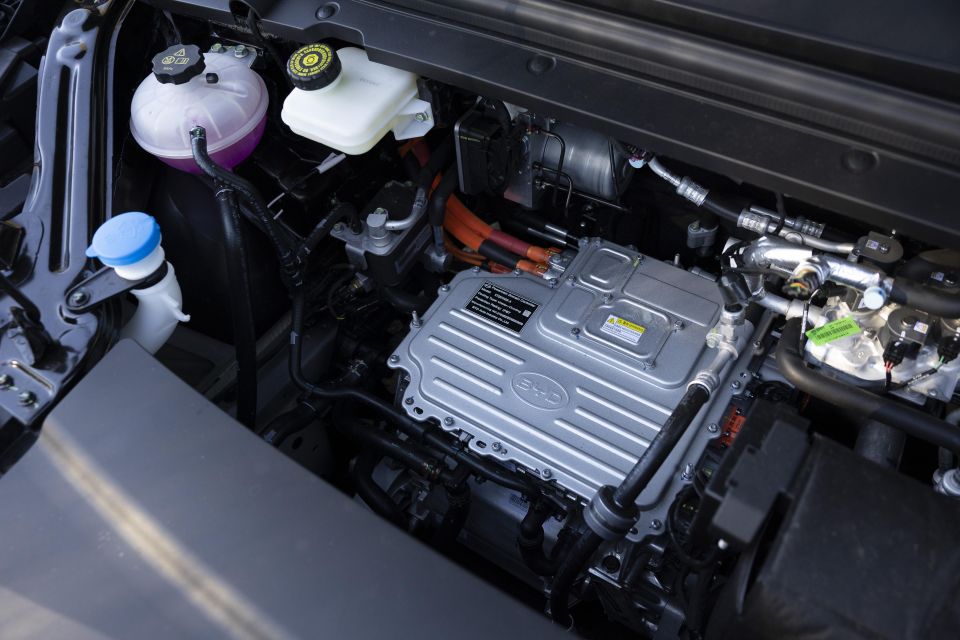
There are two choices of battery – the Standard Range has a 49.94kWh lithium iron phosphate (LFP) unit, while the Extended Range has a 60.48kWh LFP pack. LFP chemistry is often seen as more desirable than other forms of chemistry due to its known durability under repeated full charging.
The Extended Range is a bit heavier (1750kg vs 1680kg) but is actually quicker from 0-100km/h, according to BYD, with the Sport-mode-equipped heavier model achieving the feat in a claimed 7.3 seconds, as opposed to 7.9s for the cheaper model.
In terms of charging, the Extended Range model has AC charging at a maximum rate of 7kW, slower than some rivals, and that means an apparent recharge time of just under 9.0 hours if you have a 7kW wallbox.
For DC fast charging, the Standard Range model is rated 70kW, while the Extended Range’s maximum DC rate is 88kW. Either way, the Type 2 CCS charger should complete 10-80 per cent in approximately 35 mins.
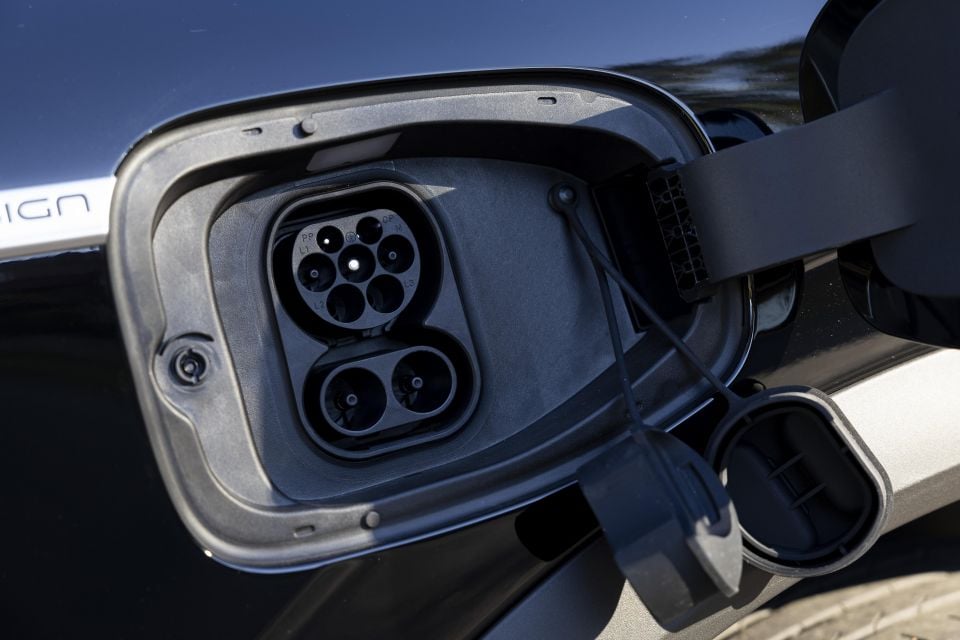
The Standard Range is rated to 345km of EV driving based on WLTP testing, and the Extended Range ups that to 410km. For many, it will be money well spent to get into the Extended Range.
The official energy consumption figure for the Atto 3 is 16.0kWh per 100km, which is decent but not amazing for a smaller EV with single motor drive.
On test, I saw a displayed return of 16.8kWh per 100km for the Extended Range, and I was on track to achieve a range of 380km across a mix of driving, including cooler morning testing.
To see how the BYD Atto 3 stacks up against the competition, check out our comparison tool.
I literally said in my last review that “the thing I think I’d do first if I was buying an Atto 3 would be to head straight to a tyre shop and put some better rubber on”.
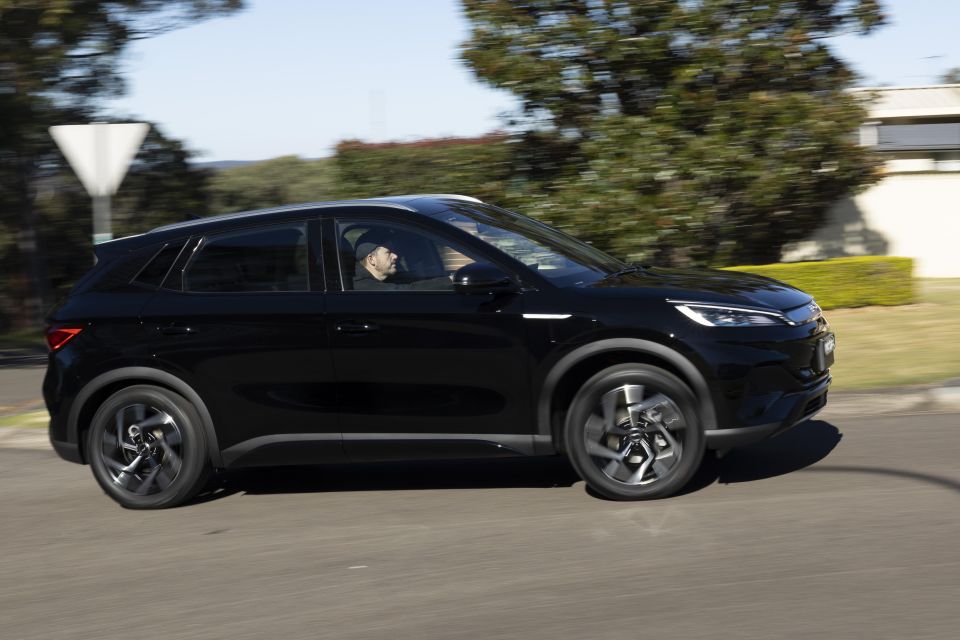
That’s because previous versions of this model had Atlas Batman tyres, and they let down the drive experience. I wasn’t alone in levelling this criticism, and it seems BYD has paid attention.
Now the Atto 3 has Continental EcoContact 6Q rubber (235/50/R18), and the tyres do make a notable difference to the drive experience. It’s funny, you know – you never realise how much a change a good set of tyres can make until you’ve driven a car with not-good tyres.
There’s a better predictability to the steering at lower speeds, a more surefooted feel to progress at pace, and less tendency for the front tyres to squeal from a standstill when you plant your foot. They’re not Conti SportContact tyres, but they certainly offer a tenacious feeling on the road, including in wet weather driving.
And while this mightn’t be the best choice for someone who wants a more fun EV drive – look at the rear-wheel drive Cupra Born or MG 4 if that’s you – but for the demographic this is trying to appeal to, the BYD Atto 3’s driving manners are perfectly acceptable.
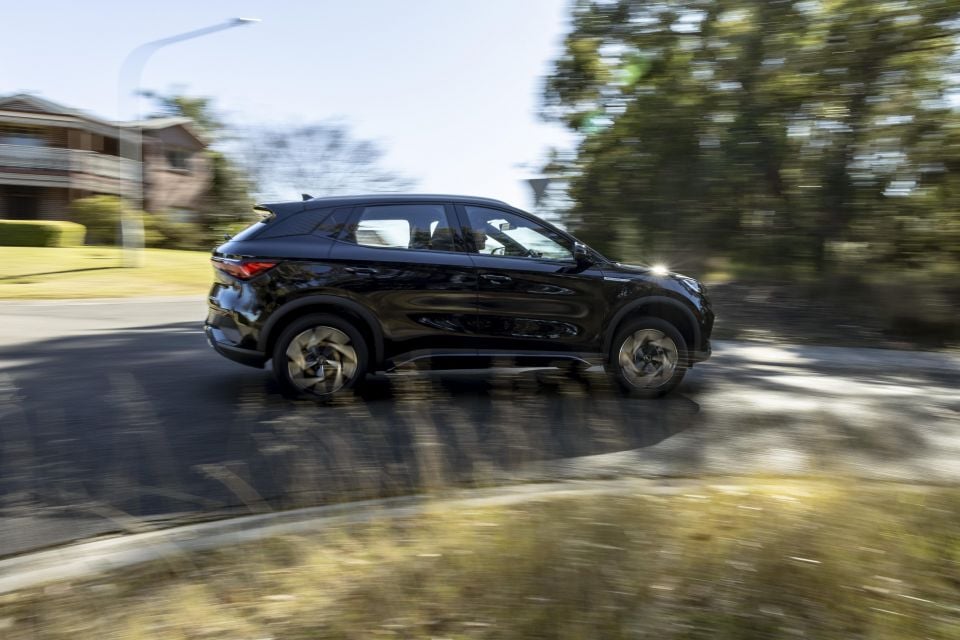
Where expert car reviews meet expert car buying – CarExpert gives you trusted advice, personalised service and real savings on your next new car.
The steering itself is adequate in a mix of driving situations, with a lightness at low speeds that may require a bit of extra arm work depending on which mode you’re in. I found it predictable enough at low speed and still confident at pace, however.
One of the best things about this car is its excellent high-resolution surround-view camera system which is standard in both models, and makes parking way easier than it might otherwise have been.
There are front, side, kerb, rear, 3D overhead and clear chassis views, and an augmented reality one that can place the car in its surroundings.
As for the suspension, it isn’t quite as subtly sporty or delightfully balanced as the aforementioned RWD EVs, but it’s reasonably well controlled in corners and when changing direction despite some body roll.

Ride comfort is acceptable, and while the wheels can transmit bumps to the cabin in some instances, it’s never unpleasant or lumpy in feeling.
The Extended Range has a Sport drive mode, too, and while it’s not as fast as some other EVs it still pushes you back into your seat. But in more sedate, normal driving the acceleration was ample, easily offering enough torque to overtake slow traffic with ease or to get away from a standing start in a fuss-free manner.
The braking isn’t like some other EVs. It still has a regenerative braking system with different modes to adjust the assertiveness of that action, but there’s no ‘single pedal’ mode like in a Nissan Leaf or a Tesla Model 3 – in those cars you can drive simply using the accelerator, and never touch the brakes if you pay attention to your surroundings.
With the Atto 3, you still need to hit the brake pedal on a regular basis.
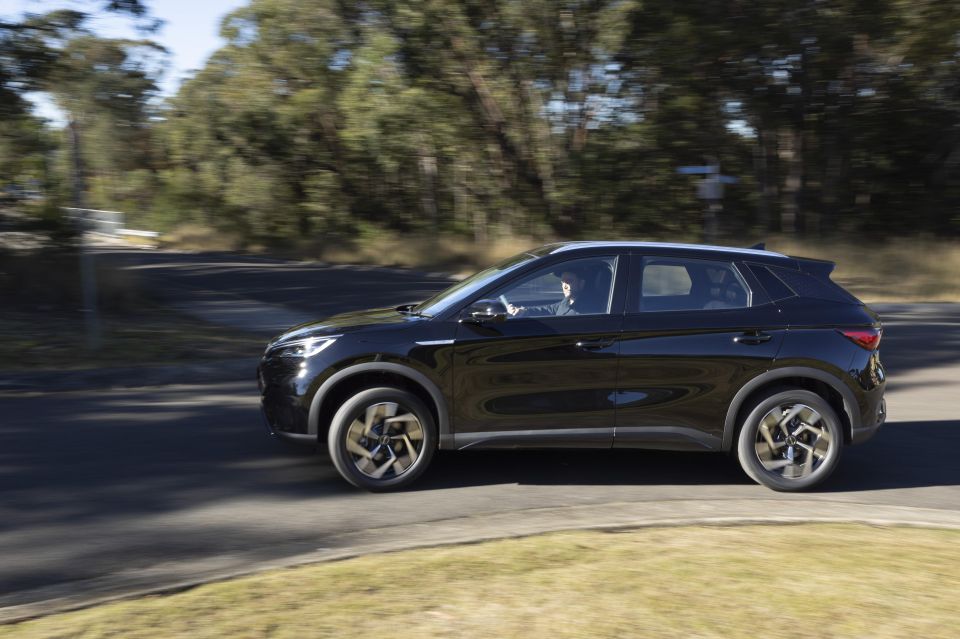
Those new tyres have also seemingly improved the amount of road noise intrusion that comes into the cabin. I found it more hushed on the highway, even on coarse-chip roads.
The active safety systems may not be to everyone’s tastes, and the emergency lane keeping system is a bit pushy at times too. Thankfully it’s still driveable with the system left on, if you can’t be bothered diving through menus to disable it each time you drive.
If you’re spending the $3000 extra for the Extended Range model, don’t go expecting extra gear – you get the same standard equipment in both models.
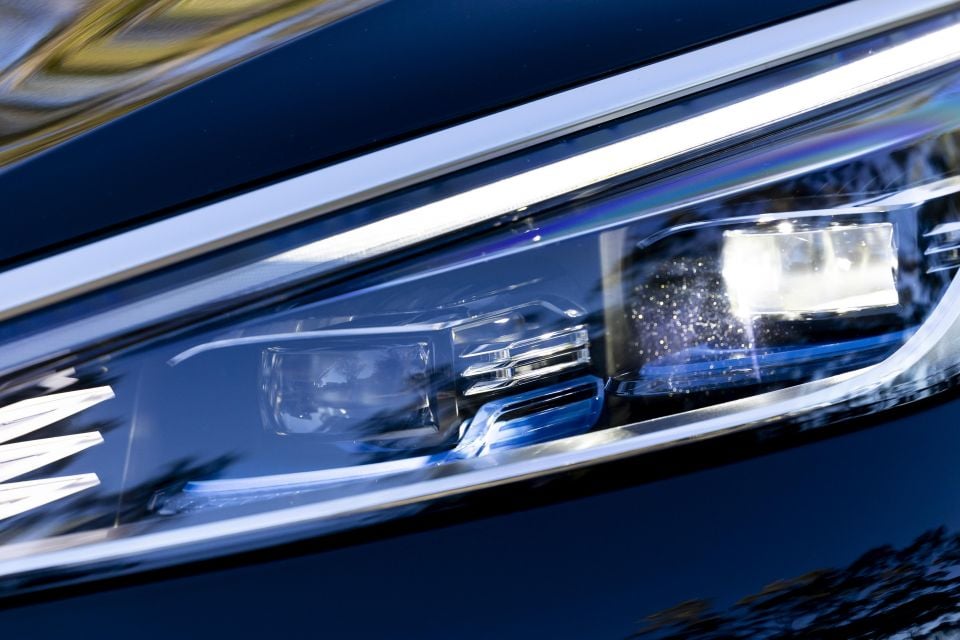
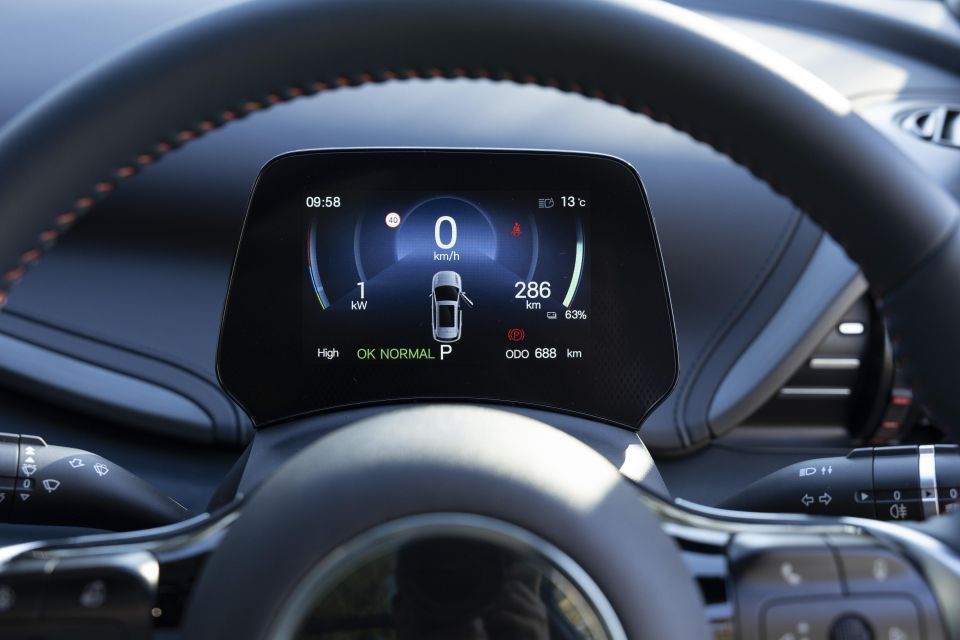
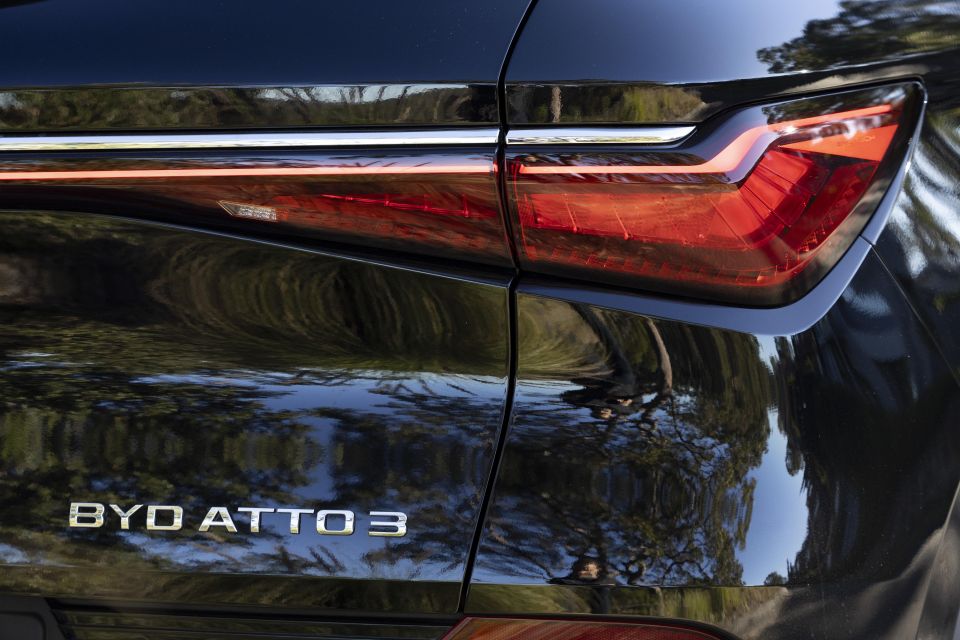

2024 BYD Atto 3 highlights:
The other difference between grades is DC fast charging capacities – the Atto 3 Standard Range has a maximum DC charging rate of 70kW, while the Extended Range can do 88kW.
The Atto 3 achieved the maximum five-star ANCAP safety rating based on 2022 testing.
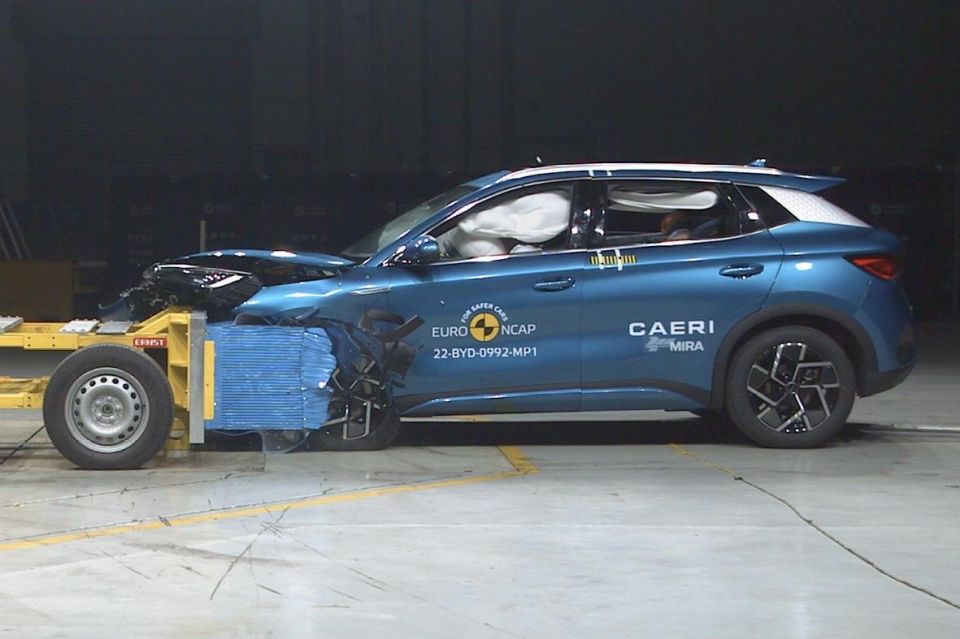
It scored 91 per cent for adult occupant protection, 84 per cent for child occupant protection, 69 per cent for vulnerable road user, and 80 per cent for safety assist.
Standard safety equipment includes:
The initial idea of offering a “Lite” servicing option for buyers didn’t stick, so there’s just an all-encompassing capped-price servicing plan.
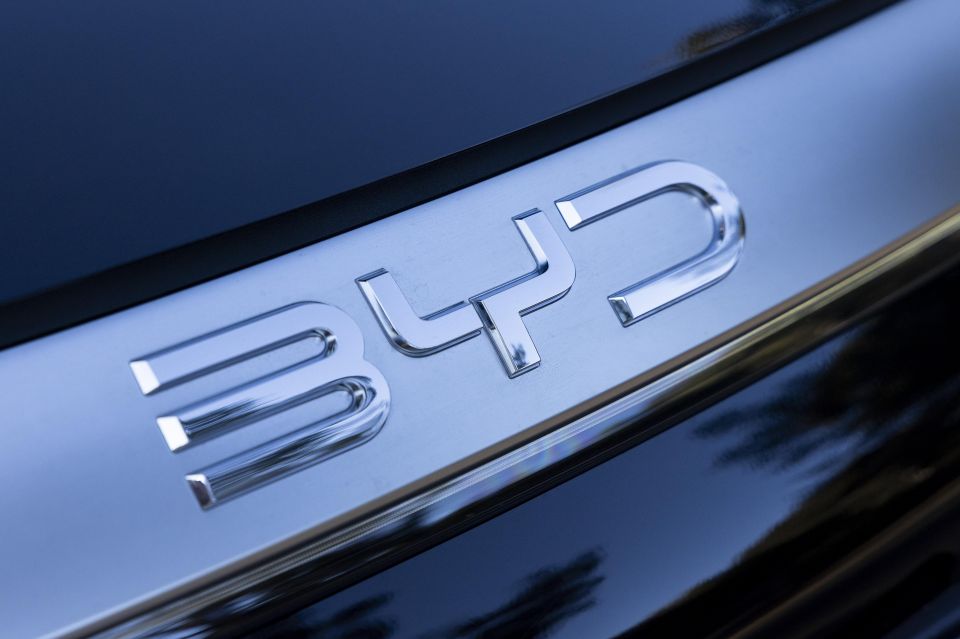
There’s a free checkup at three months/5000km, then it’s every 12 months/20,000km, which might seem excessive, but there are fewer moving parts in an EV – so it should, in theory, be more capable of coping with longer intervals.
| Service interval | Price |
|---|---|
| 3 months/5000km | Complimentary |
| 12 months/20,000km | $189 |
| 24 months/40,000km | $370 |
| 36 months/60,000km | $189 |
| 48 months/80,000km | $447 |
| 60 months/100,000km | $189 |
| 72 months/120,000km | $370 |
| 84 months/140,000km | $189 |
| 96 months/160,000km | $447 |

That works out to an annual average of $298.75 per year, which is still a lot less than most ICE SUVs, and you won’t find many with 20,000km intervals…
When it comes to warranty cover, there is a six-year/150,000km warranty for the car – but you need to take note that not everything falls under that warranty cover.
The electric motor, high-voltage assembly and motor controller have a warranty cover of eight years or 150,000km. But beyond that, there’s an eight-year/160,000km warranty for the traction battery.
The lights, tyre pressure monitoring module, suspension, ball joints have a warranty cover of four years or 100,000km; and the 12V battery has a one-year/12,000km warranty.
Meanwhile, the warranty for air conditioner filters, button battery, brake pads, clutch discs, tyres, wiper blade assembly, bulbs and fuses is just six months or 10,000km.
Buy your new car without the stress. It's fast, simple and completely free.

Great service from Travis and team, second time I have used this business would not hesitate to recommend them to anyone
Craig C.
Purchased a Ford Ranger in Sunshine Coast, QLD
CarExpert helped Craig save $7,224 on his Ford Ranger, now let us save you on your next new car.
Get your BEST priceA lower price, a better drive and a bigger screen – it’s a recipe for success, typically.
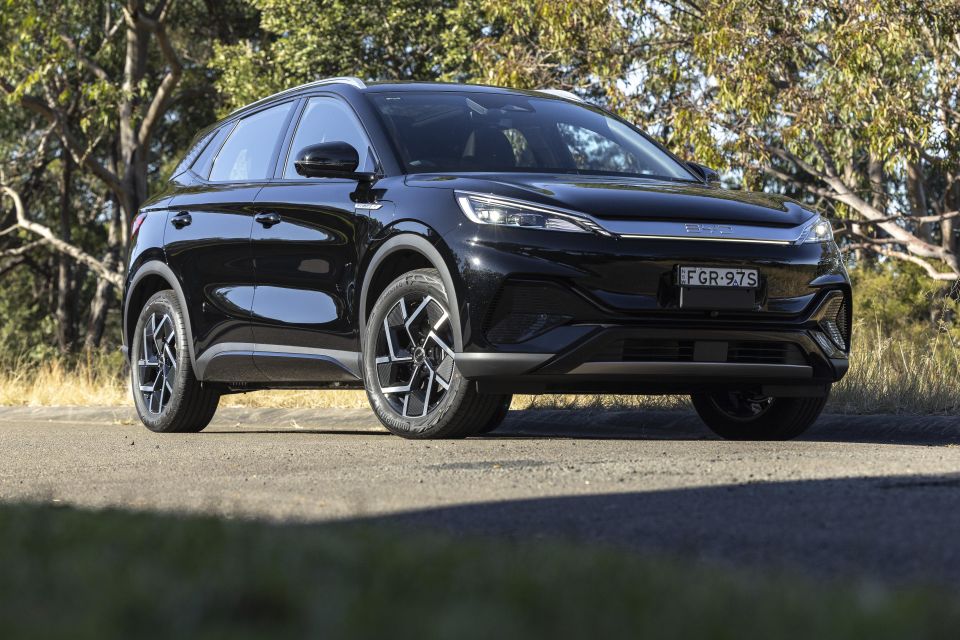
Time will tell whether the brand will need to sharpen its offer even further as more and more EVs arrive on the scene.
But as it is, the BYD Atto 3 is a terrific option for those who want a compact SUV that’s relatively easy to live with, offers a decent amount of range, and tech and equipment that some ICE models simply don’t come close to.
Click the images for the full gallery
MORE: Buy a BYD Atto 3 MORE: Everything BYD Atto 3
Where expert car reviews meet expert car buying – CarExpert gives you trusted advice, personalised service and real savings on your next new car.
Matt has more than a decade of experience in automotive journalism, and loves exploring the pros and cons of new cars, delving into deep-dive industry stories, and going for a drive just for the fun of it.


Matt Campbell
5 Months Ago
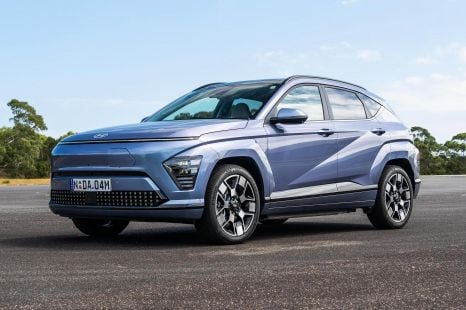

Scott Collie
5 Months Ago
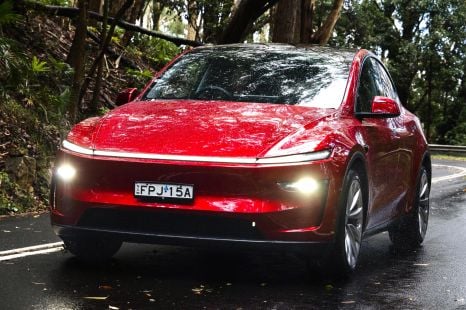

Max Davies
4 Months Ago
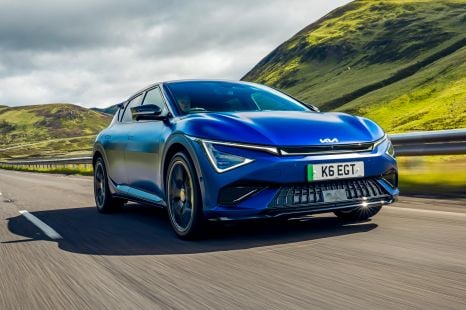

Matt Robinson
3 Months Ago
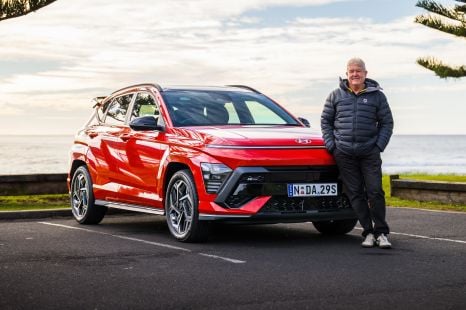

Anthony Crawford
3 Months Ago


Paul Maric
11 Days Ago